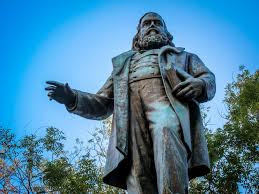 |
| Masonic Exchange Store |
“Justice, the boundary of right, constitutes the cement of civil society. This virtue, in a great measure, constitutes real goodness and is therefore represented as the perpetual study of the accomplished Mason. Without the exercise of justice, universal confusion would ensue, lawless force might overcome the principles of equity, and social intercourse no longer exist.”
William Preston
Illustrations of Masonry
Eighth Edition, 1792
Page 55
“The law of Justice is as universal a one as the law of Attraction; though we are very far from being able to reconcile all the phenomena of Nature with it. The lark has the same right, in our view, to live, to sing, to dart at pleasure through the ambient atmosphere, as the hawk has to ply his strong wings in the Summer sunshine, and yet the hawk pounces on and devours the harmless lark, as it devours the worm, and as the worm devours the animalcule; and, so far as we know, there is nowhere, in any future state of animal existence, any compensation for this apparent injustice.”
Albert Pike
Morals and Dogma
“Grand Inspector Inquisitor Commander”
Page 829
“Justice as between man and man, and as between man and the animals below him, is that which, under and according to the God-created relations existing between them, and the whole aggregate of circumstances surrounding them, is fit and right and proper to be done, with a view to the general as well as to the individual interest.”
Ibid., Page 831
“A sense of justice belongs to human nature, and is a part of it. Men find a deep, permanent, and instinctive delight in justice, not only in the outward effects, but in the inward cause, and by their nature love this law of right, this reasonable rule of conduct, this justice, with a deep and abiding love. Justice is the object of the conscience, and fits it as light fits the eye and truth the mind.”
Ibid., Page 833
“The selfish, the grasping, the inhuman, the fraudulently unjust, the ungenerous employer, and the cruel master, are detested by the great popular heart; while the kind master, the liberal employer, the generous, the humane, and the just have the good opinion of all men, and even envy is a tribute to their virtues. Men honor all who stand up for truth and right, and never shrink.”
Ibid., Page 836















































































